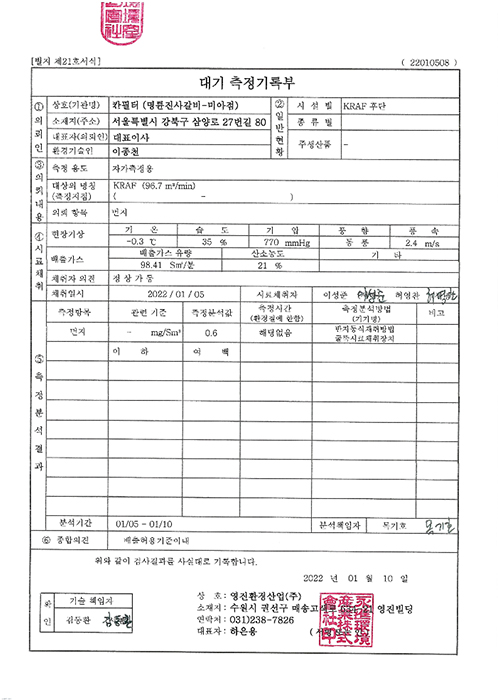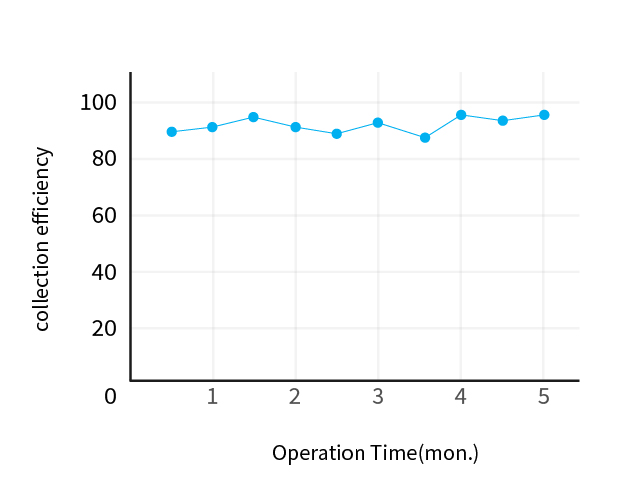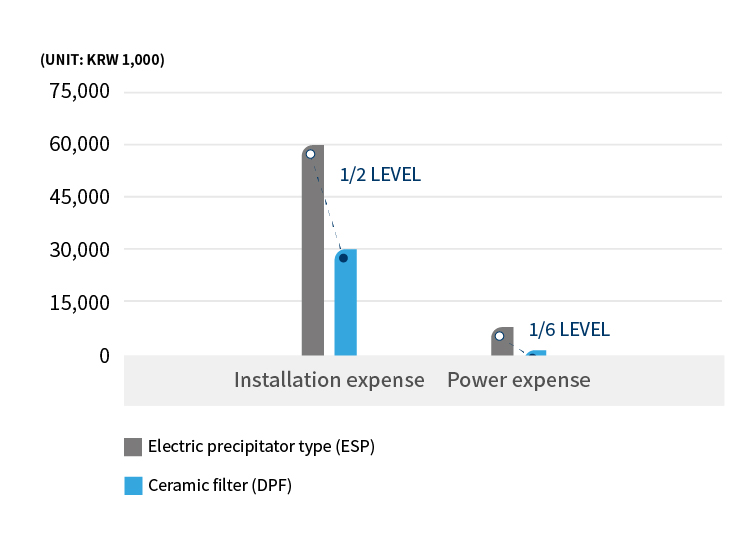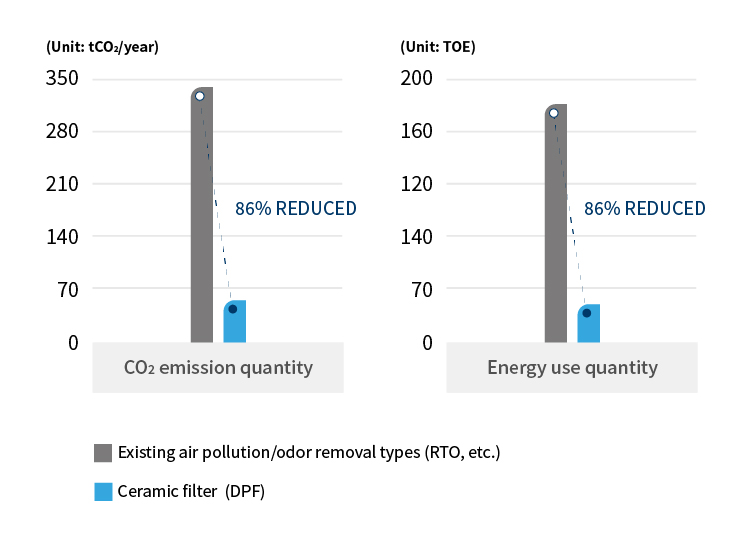Even in oil mist and water vapor situations
Continuous performance is maintained / DPF technology is applied
Dust collection rate changes over time when used without cleansing
Carbon Neutral TECH.
Ceramic filter (semi-permanently usable)
No waste and no wastewater are generated, maintenance and energy costs are saved
(collection of oil mist/PM)
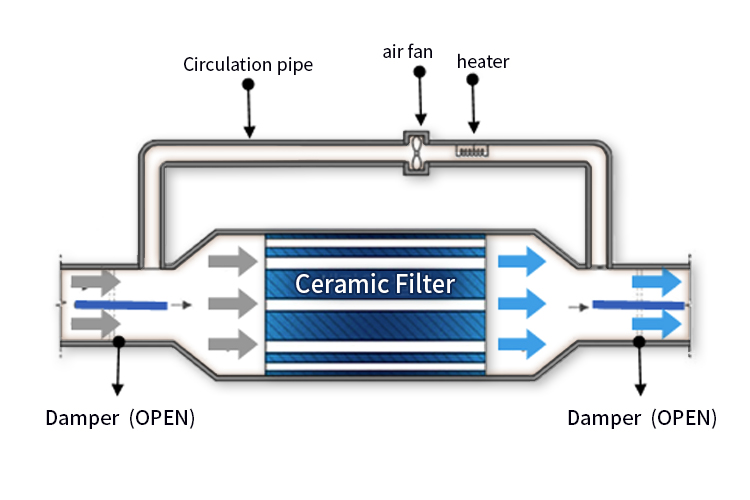
[Filtering process - No electricity used]
Ceramic filter used : Performance is maintained even in oil mist and
water vapor environments.
(filter regeneration)

[Self-cleaning process-catalytic reaction]
Self-Cleaning : oxidation and decomposition of oil mist and PM collected
by catalytic reaction after business is over.
Comparison of competitive technologies in oil mist- and water vapor-rich environments
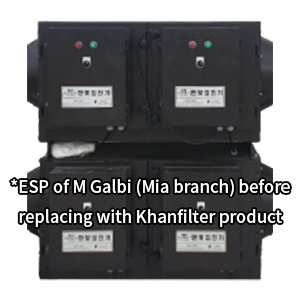
Energy usage: 120kWh
*1.2kW (300W cell × 4), 10 hr of operation a day, for 10 days
Much of the wastewater generated causes a high environmental load.
*In the United States, separate wastewater treatment equipment is required.

Energy usage : 22kWh, 1/6 level
*In the case of one self-cleaning every 10 days
technology produces no wastewater.

Filter replacement is made at least once every 2 to 3 days
to maintain kitchen ventilation performance.
➔ Generates large amounts of waste
*There is no competitive technology optimized for kitchen ventilation.
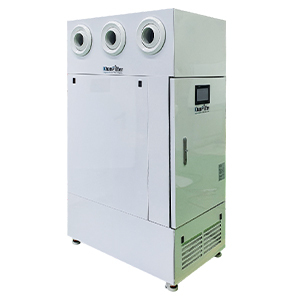
No filter replacement, No waste generated
The only, technology that can be continuously used
in oil mist- and water vapor-rich kitchen spaces
*Simple maintenance is required once a year
All-in-One TECH.
Not only removes PM but also sterilizes germs, viruses and removes odors at the same time.
The ceramic filter of DPF with a porosity of 50% or higher adsorbs PM and odors at the same time.
Unlike activated carbon, which requires replacement, the filter is refreshed by the decomposing process of the catalytic reaction during the self-cleaning process.
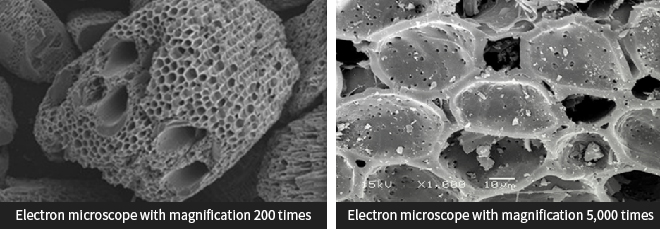
[Microstructure of activated charcoal]
Powerful dehumidification and deodorization power
from mysterious pores!
Can you see the mysterious pores of activated bamboo charcoal?
The surface area of 1g of Hole & Hole Activated Bamboo Charcoal is about 1,200m². This is a result of the activated bamboo charcoal’s spread numerous pores, whose large surface area is what drives the adsorption of different scents and moisture. This is the reason why Hole & Hole Activated Bamboo Charcoal powerfully adsorbs a variety of odors and moisture in daily life.
Structure and Principles of the DPF Ceramic Filter
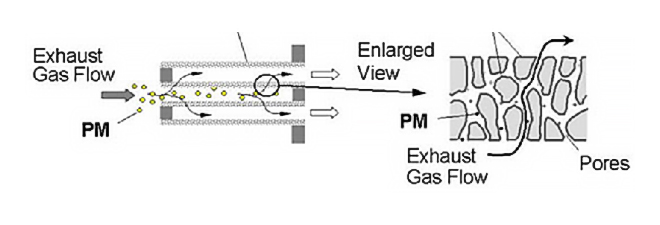
Microstructure of Ceramic Filters (DPF)
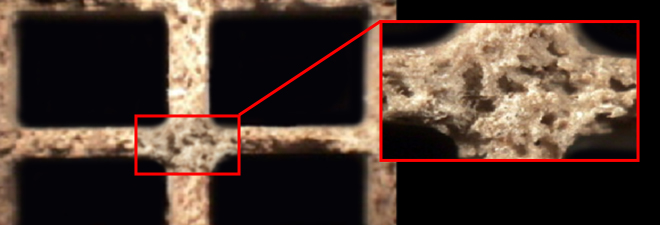
Performance of reducing harmful gaseous substances
(Osan-si Udo Galbi, 2018.12)
| Category | Relevant Standards | Measured Analysis Values (Unit: ppb) | ||
|---|---|---|---|---|
| Front (before filtering) | Rear (after filtering) | Removal Rate (%) | ||
| Ammonia | 1000 or less | 765.8 | – | 99% |
| Acetaldehyde | 50 or less | 373.1 | – | 99% |
| Propionaldehyde | 50 or less | 76.5 | – | 99% |
| Butyl aldehyde | 29 or less | 46.5 | – | 99% |
| i-Valeraldehyde | 3 or less | 6.9 | – | 99% |
| n-Valeraldehyde | 9 or less | 31.2 | – | 99% |
| Styrene | 400 or less | 12.8 | – | 99% |
| Toluene | 10000 or less | 51 | – | 99% |
| Xylene (m+p+o) | 1000 or less | 8.1 | – | 99% |
| Methyl ethyl ketone | 13000 or less | 11.4 | – | 99% |
| Methyl isobutyl ketone | 1000 or less | 1.8 | – | 99% |
| Butyl acetate | 1000 or less | not detected | – | – |
| i-butyl alcohol | 900 or less | 0.8 | – | 99% |
Odor Measurement Register
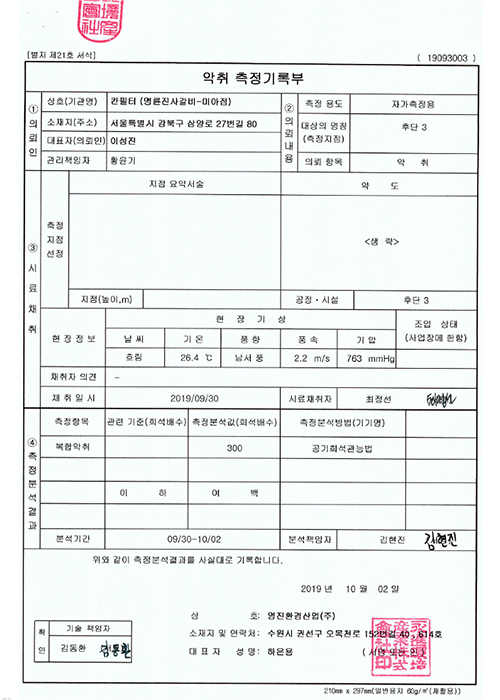
Air Measurement Register
